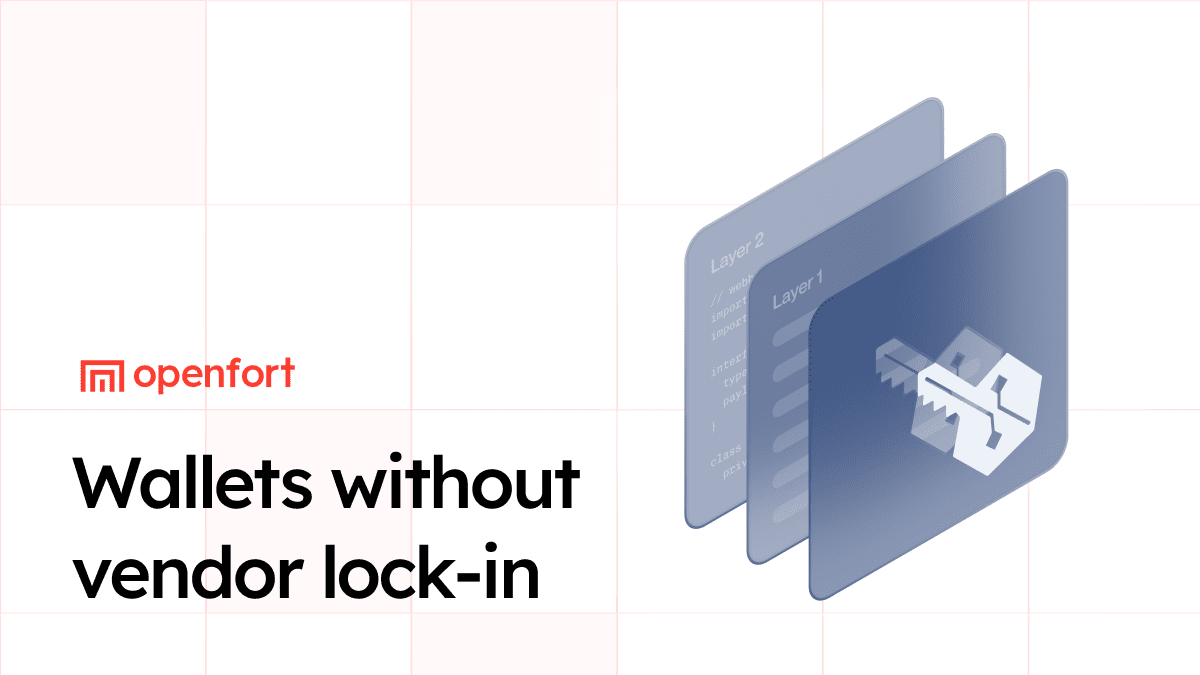
The crypto wallet landscape presents a significant challenge: once you've integrated with a wallet provider, switching feels nearly impossible. Most developers find themselves trapped by architectural decisions made early in development, locked into specific vendors with no clear exit strategy. This vendor dependency creates serious business risks including price manipulation, service discontinuation, security vulnerabilities, and regulatory compliance issues.
The problem extends beyond simple integration complexity. Traditional wallet systems create multiple layers of dependency that compound over time, making migration increasingly painful and expensive. However, there are strategic approaches to avoid this trap entirely, both from a developer perspective and an end-user standpoint.
The Developer's Path: Self-Hosting Solutions
From a developer standpoint, the most effective way to avoid vendor lock-in is choosing solutions that support self-hosting from the outset. OpenSigner by Openfort exemplifies this approach with its modular, self-hostable architecture.
OpenSigner addresses vendor dependency through a distributed key management system that splits private keys into three shares stored separately: one on the user's device, one in hot storage, and one in cold storage. Any two of these three shares can reconstruct the original key, providing both security and flexibility.
The critical advantage lies in OpenSigner's deployment flexibility. Developers can run fully self-hosted implementations (Scenario 1), controlling all components including cold storage, authentication service, hot storage, and iFrame. This complete ownership eliminates vendor dependency while maintaining security through attested builds that can be verified for tampering.
OpenSigner also supports hybrid deployment scenarios where developers self-host critical components while potentially using third-party services for others. This graduated approach allows teams to maintain control over the most sensitive elements while leveraging managed services where appropriate.
The architecture supports three recovery methods - automatic, password-based, and passkey recovery - each with different security trade-offs. Password-based recovery provides the strongest protection against vendor dependency since encryption happens entirely client-side with user-controlled entropy.
The End-User Perspective: Smart Wallet Architecture
For end users, the most robust protection against vendor lock-in comes from smart wallet architecture with multi-signature capabilities. Unlike traditional externally owned accounts (EOAs) where private keys are immutable, smart wallets use smart contracts to hold user assets with updatable signing permissions.
This architectural difference is transformative. When users need to switch providers, smart wallets enable seamless migration through signer rotation rather than asset transfer. Users retain the same wallet addresses, preserve transaction history, and avoid gas fees associated with moving funds.
Smart wallets with multisig setups provide additional flexibility by allowing users to add new signers before removing old ones. This gradual transition process eliminates the security risks inherent in traditional wallet migrations where private keys must be exported and imported.
The migration process becomes invisible to users - what appears as a simple backend change maintains full continuity of wallet functionality without disrupting the user experience.
Alternative Migration Strategies
While architectural solutions provide the best long-term protection, traditional wallet users still have options for avoiding permanent vendor lock-in:
Private Key Export
Most reputable wallet providers allow users to export their private keys or seed phrases. This enables migration to different wallet providers, though it requires transferring all assets to new addresses with associated gas costs and security risks during the export process.
Manual Asset Transfer
Users can create new wallets with different providers and manually transfer their assets. While this approach works, it's expensive due to gas fees and creates operational complexity, especially for users with assets across multiple chains or complex DeFi positions.
These traditional methods, while functional, highlight why architectural solutions like smart wallets provide superior user experiences and security models.
The Strategic Advantage
The choice between these approaches often depends on the specific use case and development stage. For new projects, implementing smart wallet architecture with self-hostable infrastructure provides maximum flexibility. Existing projects might benefit from gradual migration strategies or hybrid approaches.
The key insight is that vendor lock-in is not inevitable - it's an architectural choice. By prioritizing solutions that separate key management from service provision, both developers and users can maintain control over their wallet infrastructure while still benefiting from managed services where appropriate.
We offer a self-hosting and cloud based solution for wallet infrastructure. If you're not looking to self-host today but want to have the optionality in the future. Consider using Openfort
Smart wallet architecture represents the future of wallet infrastructure precisely because it solves the vendor dependency problem at a fundamental level. Combined with self-hostable solutions like OpenSigner, developers and users can build resilient wallet systems that adapt to changing business needs without sacrificing security or user experience.